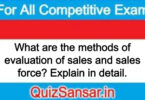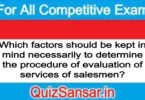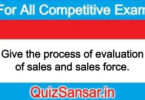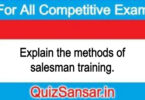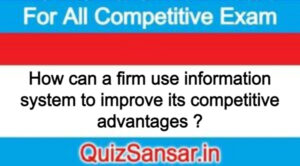
How can a firm use information system to improve its competitive advantages ?
How can a firm use information system to improve its competitive advantages ?
Or
What do you understand by competitive advantage? How can generic competitive Strategies be utilized to gain strategic advantage through information technology?
Or
Describe appropriate model for analyzing strategy at the business level and the types of strategies and information systems that can be used to compete at this level.
Ans.
In most industries there is often a company that is far ahead of the game. These companies are the leaders of their field and tend to set the bar for their competitors. These companies are said to have competitive advantages. It has been argued if the result of their success is due to access to resources that others do not have or if it is “because of superior knowledge and information assets”. Regardless, these companies seem to have a better grasp on the principles of gaining competitive advantages:
◆ cost reduction
◆ raise barriers to market entrants
◆ establish high switching costs
◆ create new products or services
◆ differentiate products or services
◆ enhance products or services
◆ establish alliances
◆ lock in suppliers or buyers
The introduction of technology into the business community has dramatically changed business practices and how advantages are gained. Information Systems, which is comprised of hardware, software, data, people, and procedures, is used to produce information that may allow a company to gain competitive advantage by producing insights that lead to actions. These insights and actions, when used efficiently, is one possibility that allows companies like Wal-mart and Google to stand above the rest and expand its business capabilities far above the heads of its competitors.
Examples of Organizations that use Information Systems as a Competitive Advantage
◆ Dell Computer has created a build-to-order system that allows customers to build and customize their computer online. They also have a process that allows them to ship the custom computers rapidly. Dell has become a low cost producer from their information systems (O’Brien, 2005).
◆ Amazon one-click purchasing (customers enter shipping and credit card information only once for current and future purchases) gives them a competitive advantage over other shopping sites. This technology was patented in 1999 and for a fee this technology is now being used by other sites such as Barnes & Noble. (Course Technology, 2009)
◆ Progressive Group enhanced services by allowing insured customers the ability to file a claim online, track the claim’s progress and offering a free service called “Total Loss Concierge Service”. This Concierge Service uses their information system that contains details about the insured’s totaled car. As Progressive’s system is now connected with car dealerships and financial institutions, they can offer aid in the purchase of a new vehicle for their customers. (Course Technology, 2009)
◆ Microsoft Office is an example of High Switching Costs. Free office software is available from OpenOffice but most consumers do not want to learn new software so they will not use another product. (Course Technology, 2009)
◆ Apple iPhone was a new product that gave Apple a competitive advantage over other cell phone manufactures. eBay and Facebook are also new products that have gained a competitive advantage.
◆ L’Oréal name illustrates Differentiate Products or Service Consumers buy L’Oréal products because they believe these products to be superior to the competition.
◆ Amazon and Target have Established an Alliance. When you go to Target’s web site you see “Powered by Amazon.com” as Target utilizes Amazon’s information systems. Target pays an annual fee plus a percentage of web site purchases to Amazon for information systems use.
◆ Walmart is the largest retailer in the world so they are able to Lock in Suppliers. This is one example of Wal-Mart’s competitive advantage.
Growth Strategy
An organisation may grow in two different ways. Growth may either mean the growth of the existing business turnover, year after year, or it may mean the expansion and diversification of the business.
A two wheeler manufacturing company’s growth was very rapid on a single product for more than two decades; then it brought out new models, then came the range of products, finally the company had manufacturing units at multiple locations. This is an example of the growth of the existing business structure.
There is another organisation which manufactures a variety of products, and it positions them into multiple markets. It has the products from, say, soaps and oils to machinery. Its policy, therefore, is to grow with diversification.
Growth strategy means the selection of a product with a very fast growth potential. It mean choice of industries such as electronics, communication, transport, textile, plastic, and so on where the growth potential exists for expansion, diversification and integration. The growth strategy means acquisition of business of the other firms and opening new market segments.
Growth strategies are adopted to establish, consolidate, and maintain a leadership and acquire a competitive edge in the business and industry. It has a direct, positive impact on the profitability.
Product Strategy
A growth strategy, where the company chooses a certain product with particular characteristics, becomes a product strategy. A product strategy means choice of a product which car expand as a family of products and provide the basis for adding associated products. It car be positioned into the expanding markets by way of model, type, and price.
The product strategy can be innovated continuously for new markets. Some examples are as follows:
1. A company producing pressure cookers enters the business of making ovens, boilers, washing machines and mixers-the products for home market.
2. A company producing a low priced detergent powder enters the business of washing soap and bath soap.
3. A company producing refrigerators offers a wide range of models with different capacities and features, and further enters into the market of Coolers, Window Air Conditioner, etc.
When a consumer need exists, has a potential of expanding in several dimensions and a product can be conceived satisfying that need, it becomes the product strategy.
Market Strategy
The product and the marketing strategies are closely related. The marketing strategies deal with the distribution, services, market research, pricing, advertising, packing and choice of the market itself. A few examples of marketing strategies are as follows:
1. Many companies adopt the strategy of providing after sales service of the highest order. They may offer a free after sales service or establish service organisations to solve customer complaints and problems.
2. A company can offer its products in different packages keeping in mind the consumer budget.
3. A company can arrange for loan facilities to buy its products and keeps the prices low.
4. A computer company manufactures computers and markets them through the market leader under their brand name. The marketing strategies act as an expediting and activating force for the product and the growth strategy and as the force which accelerates business development. They are generated to create loyalty and preference, for holding market share, for communicating consumer needs and also explaining how the product satisfies it. Marketing strategies are generally centered around one of the factors such as quality, price, service, and availability.
The corporate management formulates the strategies and implements them. The choice of strategy and the method of implementation affects the corporate success. Development of a strategy is a difficult task and it is an exercise in multidisciplinary fields. It can be developed by the business analyst under the directions of the management. The attitude and philosophy of the management will be reflected in the strategy formulation. There are no ready-made formulae or procedures to ensure the selection of a correct strategy, only the results can prove its worth.
The last but not the least point is the business policy evolved by the top management. All the strategies are governed by the business policy. The policies mirror the management’s bias, preference, attitude, strength and weakness. Business policy is the frame within. which the strategies are sketched.
Business policies provide the necessary guidelines to decide and act across the company and they generally remain effective for a long time. The business policies inform people in the organisation about the intentions of the management to conduct the business in a particular direction and in a particular manner. The policies should be clearly stated as they would be used by the people in the organisation without recourse to consultation. This is also true for a strategy formulation.


